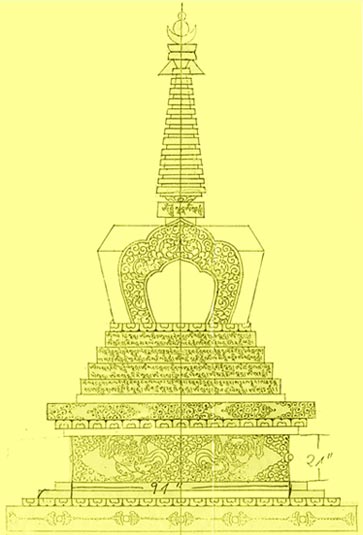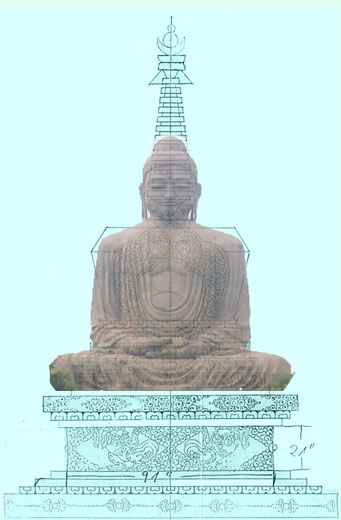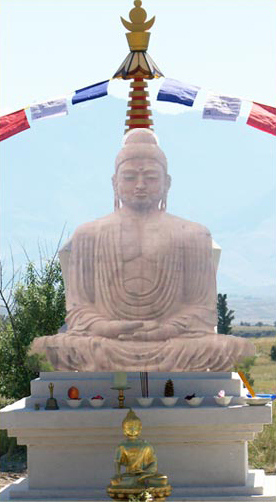 Stupa Design by Khenpo Konchog Tashi |
CIRCLE - The Circle - The perfect shape of the circle expresses CRESCENT MOON - This denotes the element of air. Air has the CONICAL SPIRE - This signifies the element of fire. Fire, of HEMISPHERICAL DOME - The main mass of the classical form of SQUARE BASE - This symbolizes the element earth.
The phenomenal world spreads out in the four directions and the square
with its four sides is an appropriate metaphor for the same. These four
directions define the earth and bind it in order. Hence the square is the Information from Exotic India website |
|
||
 |
HARMIKA - Just below the spire:
Eyes of the Buddha. The 8-fold Noble
Path: Right View, Understanding,
Speech, Action, Livelihood, Effort, BUMPA - The Buddha’s chest: the 7 Elements of Enlightenment: Mindfulness, Discrimination, Exertion, Joy, Pliancy, Samadhi, Equanimity. DOME - (4 Steps below Bumpa) - The legs of the Buddha: the 4 immeasurables of Loving Kindness, Compassion, Joy and Equanimity. THRONE - (3 Steps at the Base) - The 3 refuges of Buddha, Dharma and Sangha. |
 |
Copyright 2008, Violet Flame Stupa Foundation |